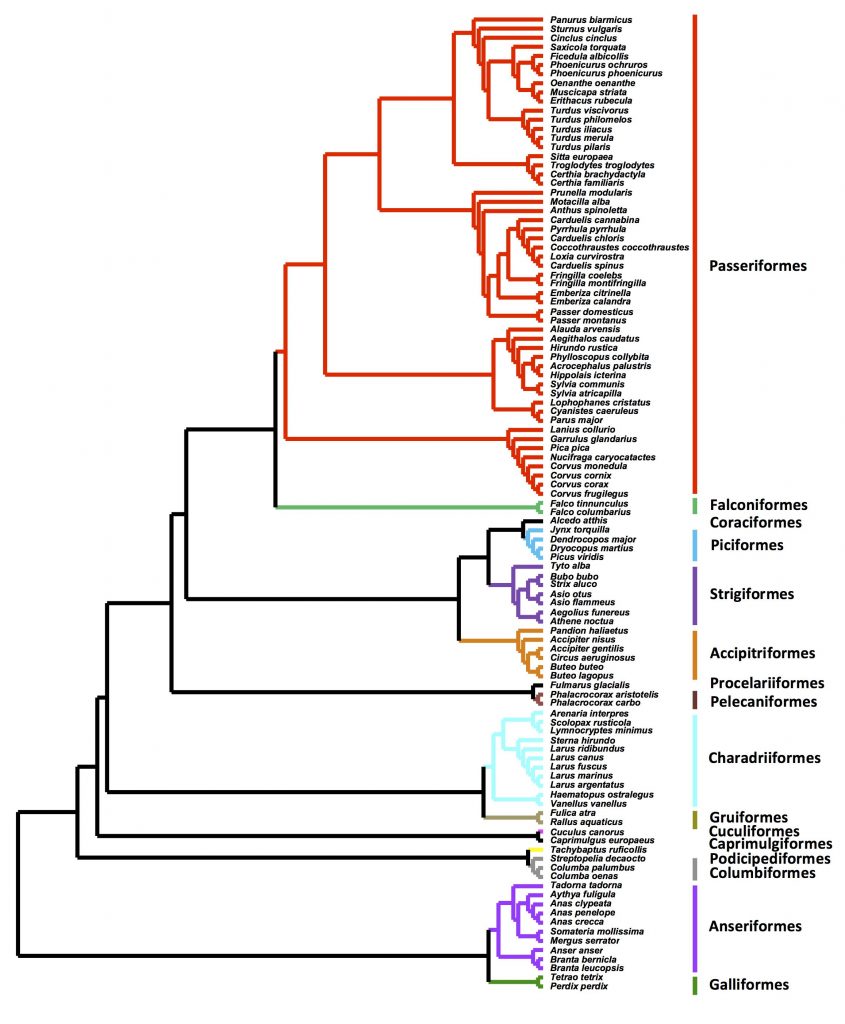Biomolecular vibrationVibration in the covalent bonds of molecules produces Raman scattering, whose analysis can be used as a molecular characterizing feature. I take advantage of this property by using Raman spectroscopy to detect chemical forms of melanins in biological tissues, which led us to develop the first non-invasive tool to identify and quantify both pheomelanin and eumelanin in feathers and hairs.  Beyond this applicability, I explore relevant biological questions raised by the analysis of melanins by Raman spectroscopy. From an evolutionary perspective, I investigate the possibility that the vibrational characteristics of melanins determine the pigmentation phenotype. Although molecular vibration occurs at infrared frequencies, it may also affect electronic properties and thus the absorption of visible light. If a given amount of melanin could give rise to different perceived colors because different structural melanin conformations may present different vibrational characteristics, this may represent an important evolutionary force. Indeed, we have shown that the vibrational characteristics of melanins explain >9 times more variability in plumage color expression than the concentration of these melanins in feathers, and the calculations of theoretical Raman spectra and Huang-Rhys factors for melanin monomers suggest that this effect on the resulting colors could actually be explained by an influence of molecular vibration on the absorption spectra of melanins. This constitutes a novel view of animal coloration. From a physiological perspective, I have found that producing pheomelanins with different vibrational characteristics is associated with reactive oxygen species (ROS) production in the mitochondria of the melanin-synthesizing cells (melanocytes) and with oxidative stress and damage at the organismal level. These consequences may arise because of the close physical contact existing between mitochondria and the organelles where melanin synthesis takes place in melanocytes (melanosomes), and reveals an unprecedented factor affecting the viability of organisms through their pigmentation. |
Evolution of honestyMost biological signals functioning in intraspecific or interspecific communication are honest. The evolution of signal honesty is mainly understood through the concept of individual quality, as high expressions of honest signals are limited to high-quality signalers. Over the last four decades, high-quality signalers have been assumed to be those that pay lower fitness costs for producing a signal than other, low-quality signalers, on the basis of the handicap principle. However, a growing body of evidence indicates that differential costs are not necessary to explain the evolution of honest signals. My work on honest melanin-based signals indeed suggests that individual quality and honesty evolution can be properly understood by considering the physiological basis of signal expression, as well as the chemistry of melanin pigments in detail. |
|
Evolution of aging and lifespanAging and death is the fate of most organisms, and unraveling its causes has been an obsession since the beginning of civilization. We have found different patterns of senescence in melanin-based traits under natural and sexual selection. We have also investigated, in collaboration with Dr. Reinald Pamplona from the University of Lleida, how the composition of cell membrane fatty acids predicts lifespan between species. Our work is probably the most comprehensive comparative study on longevity to date. However, longevity varies enormously among species, thus we also investigate the reasons that allow the evolution of short lifespans beyond the accepted evolutionary hypotheses of aging. The results of our comparative studies of birds suggest that the evolution of lifespan variability is the result of the ecological process of dispersal. |
|


